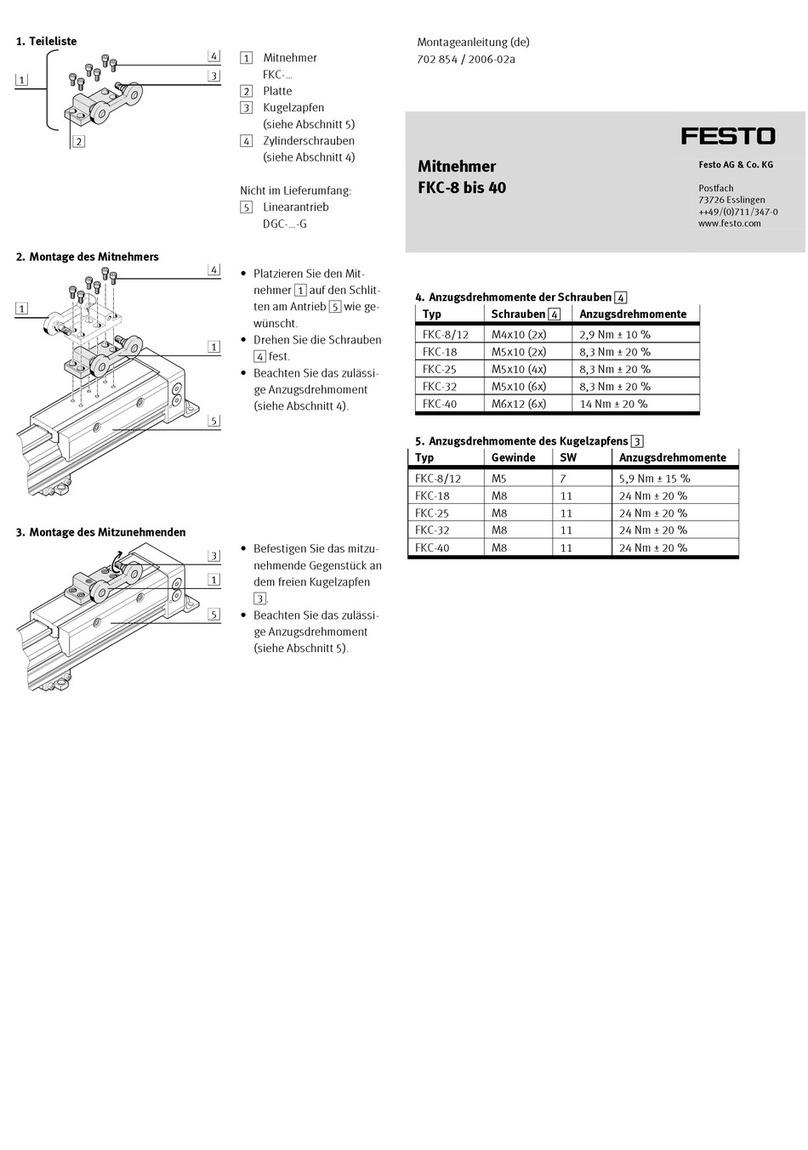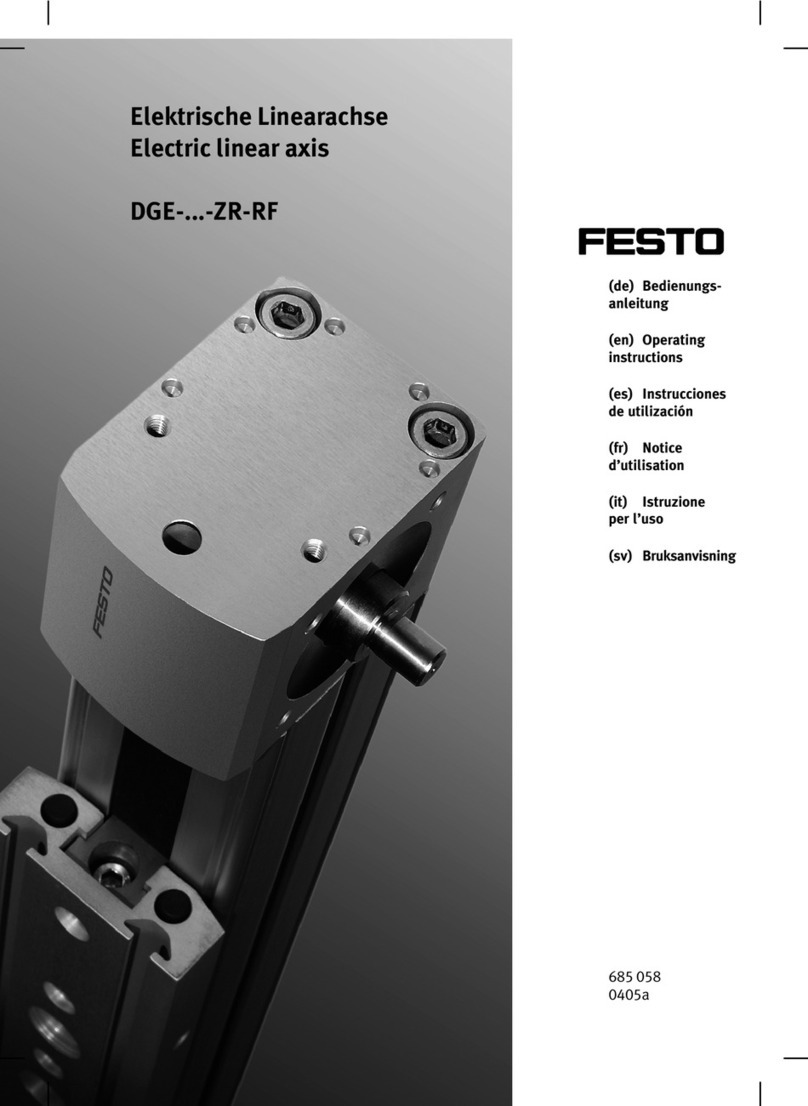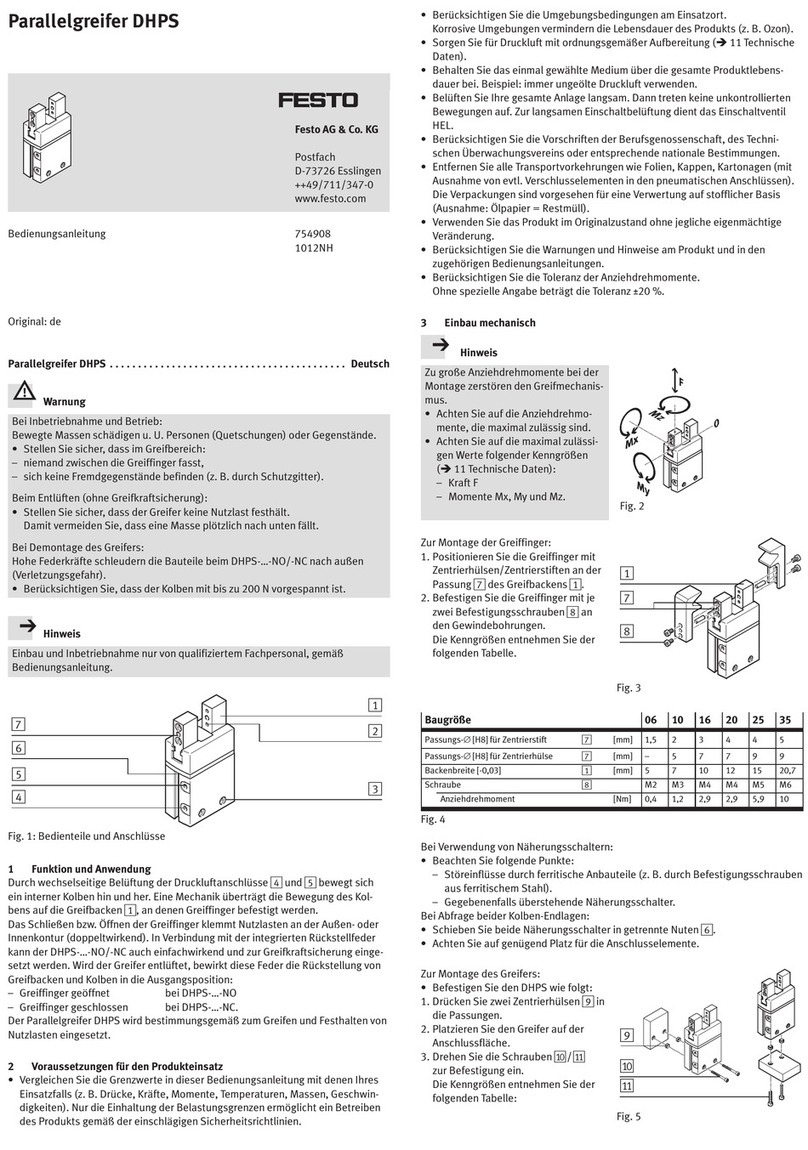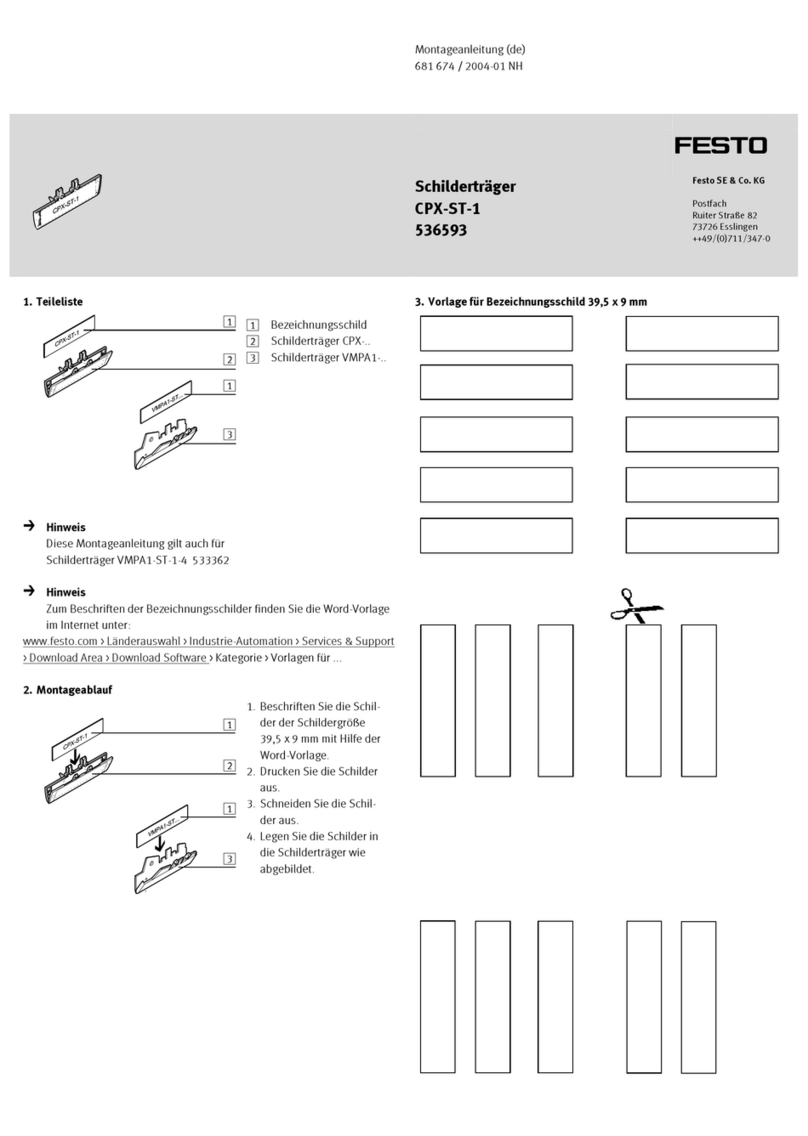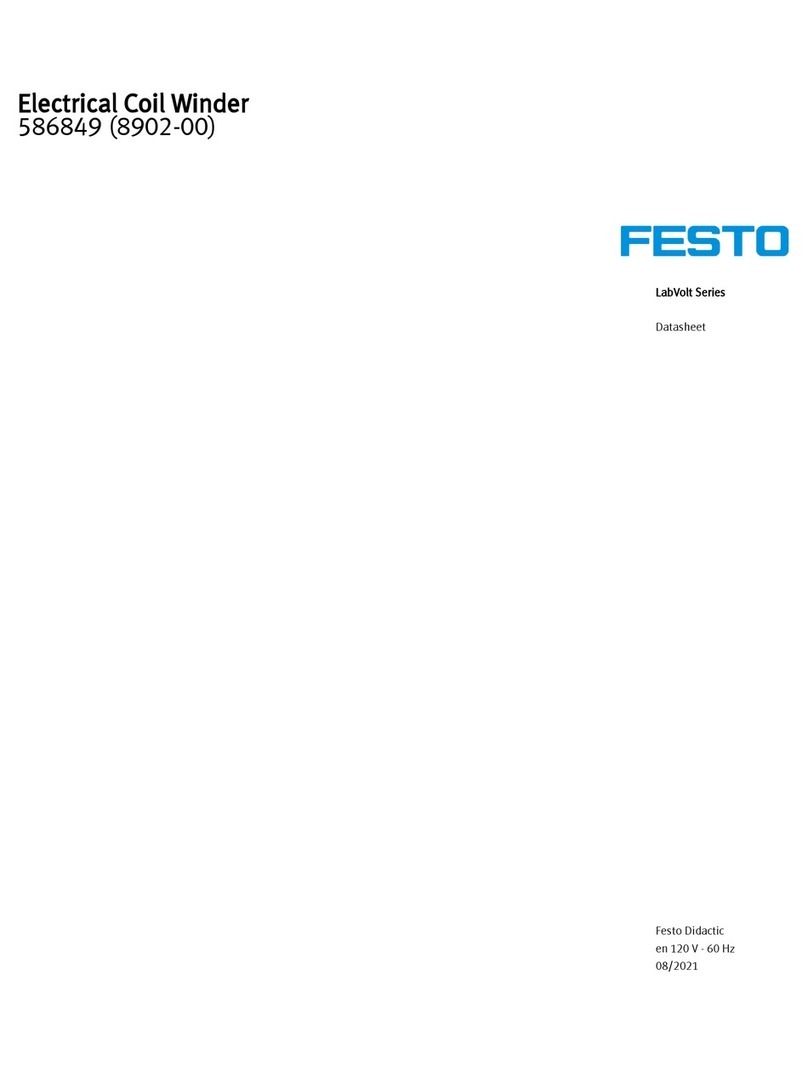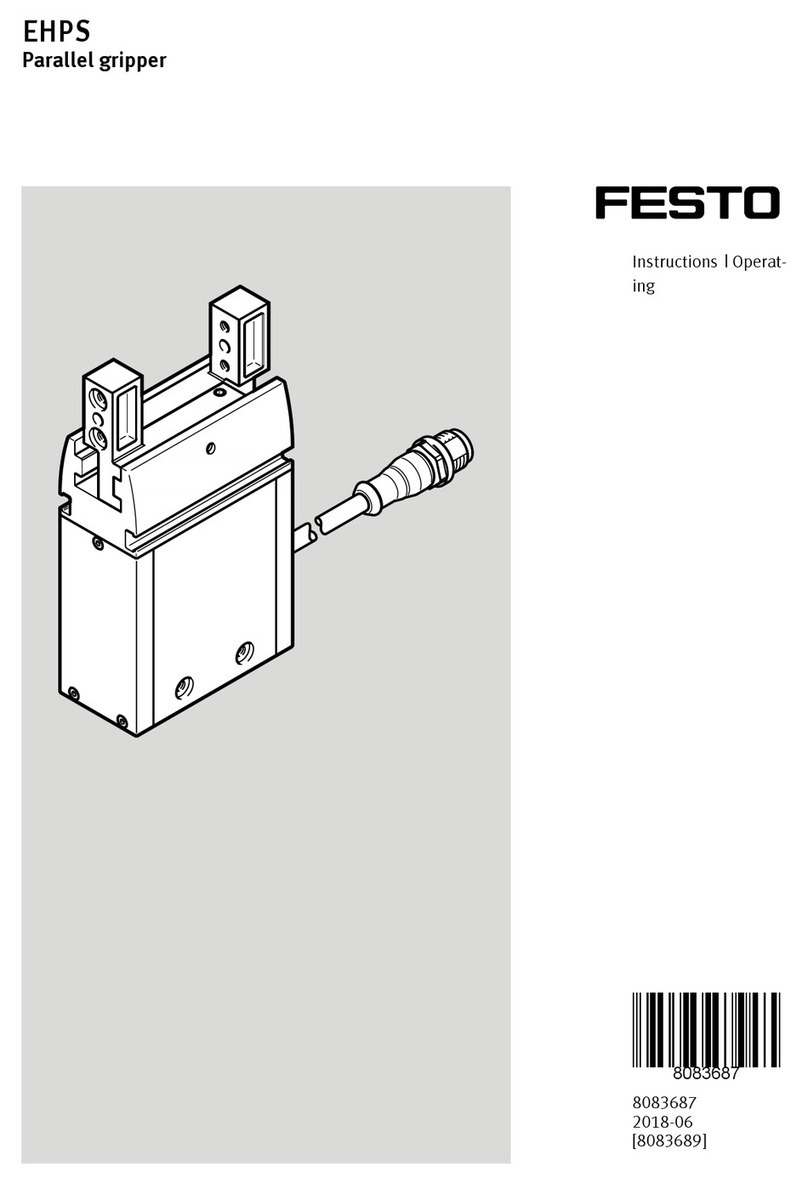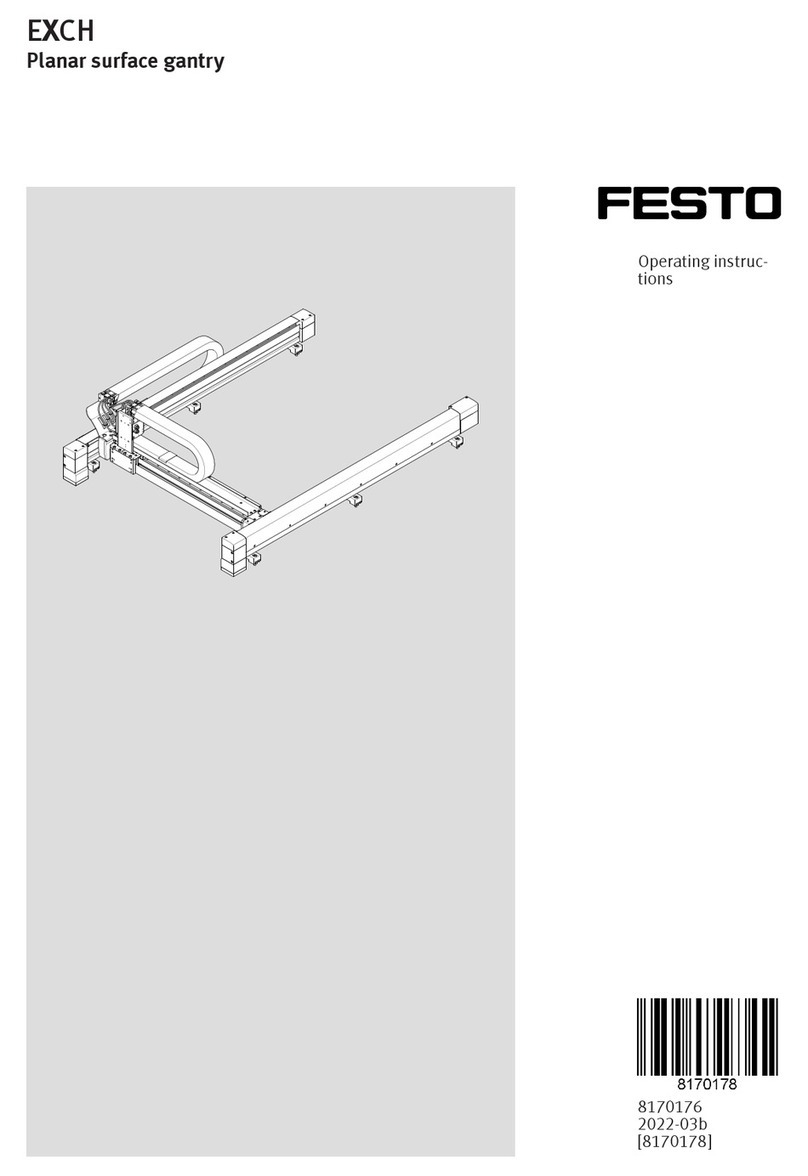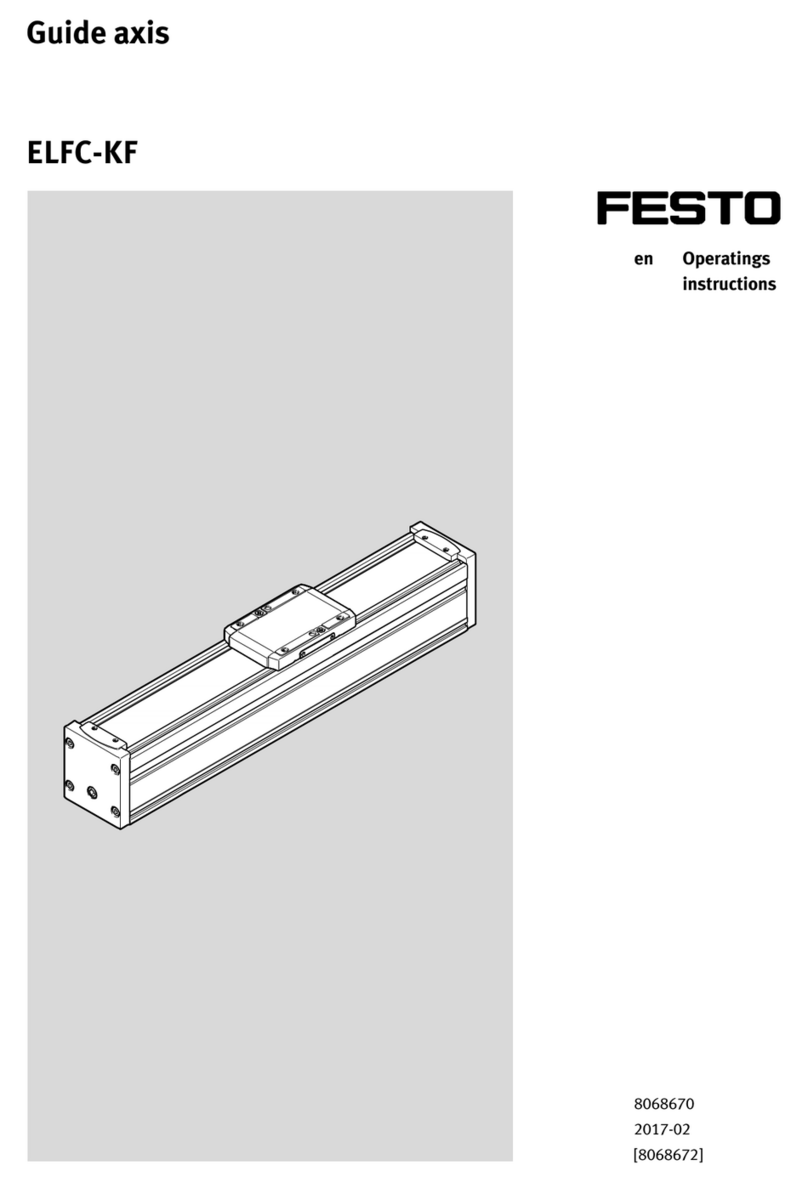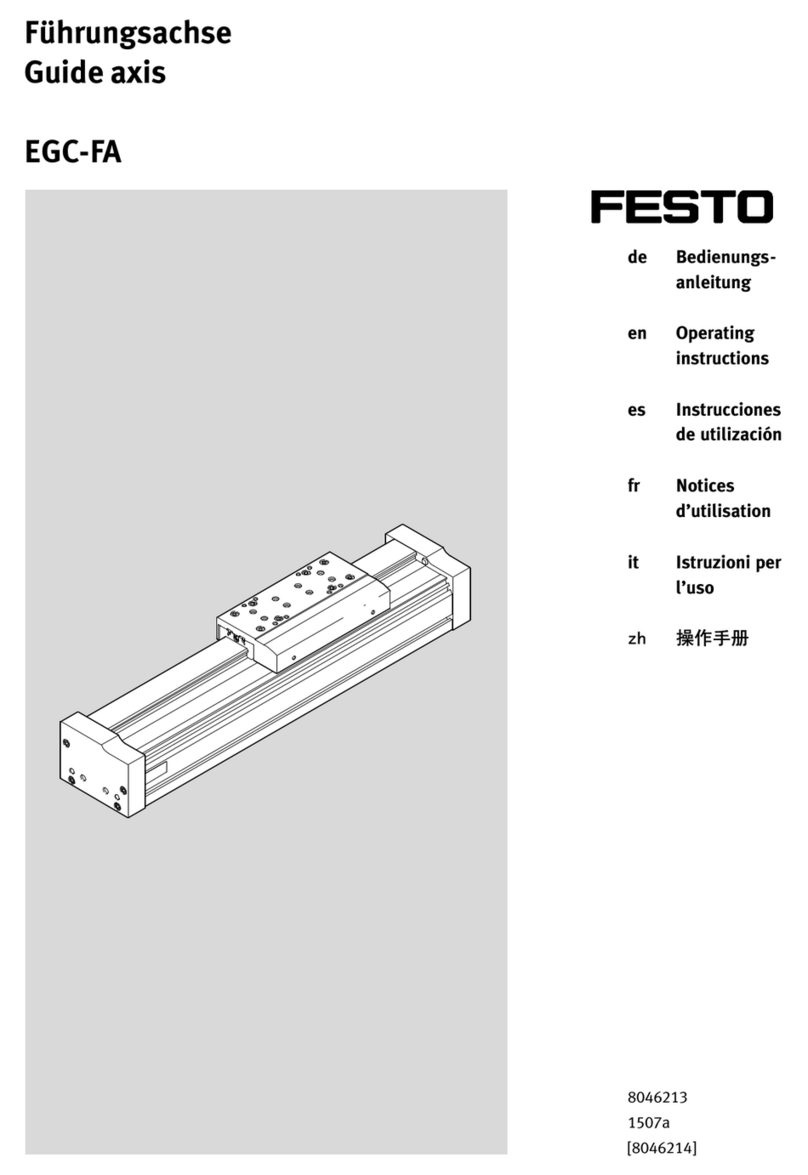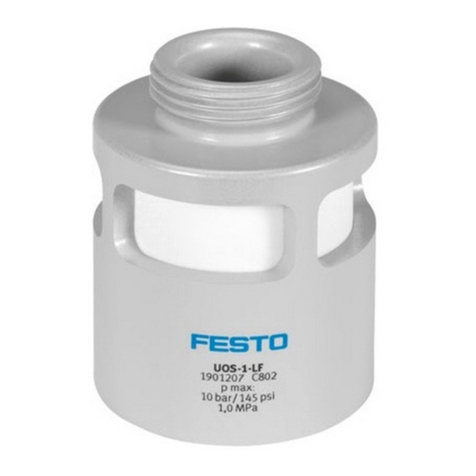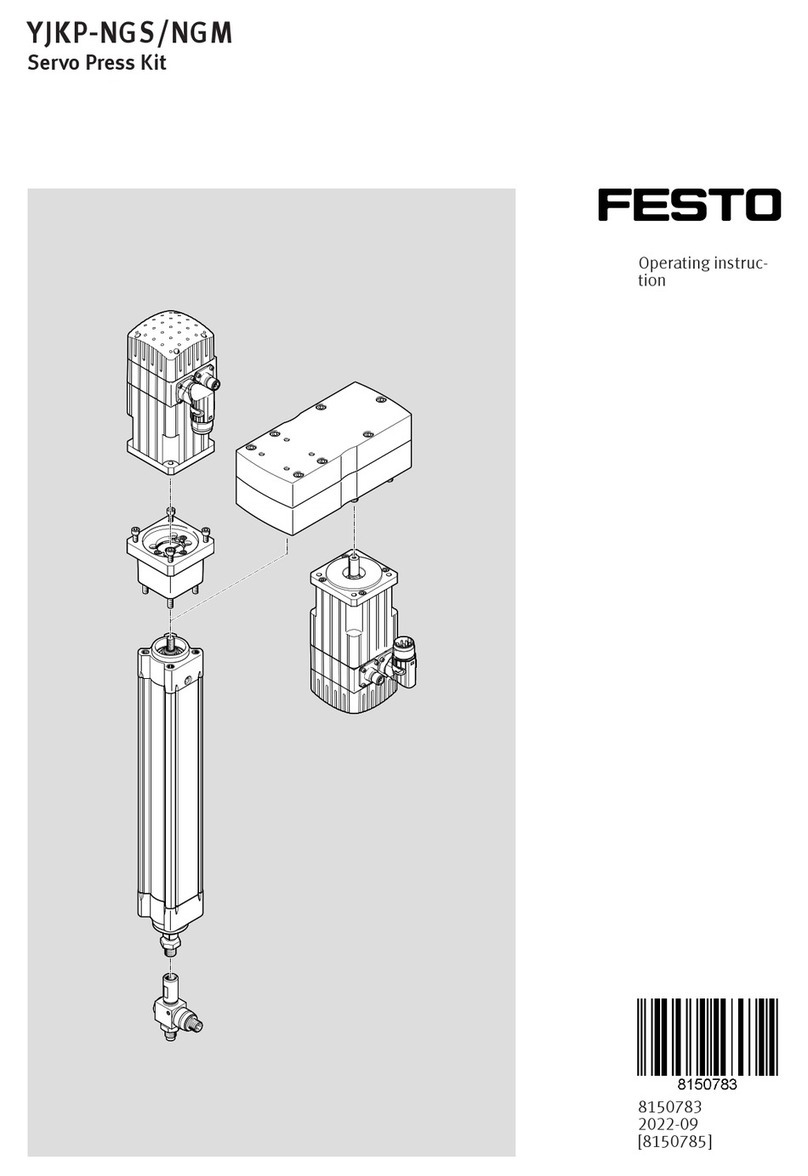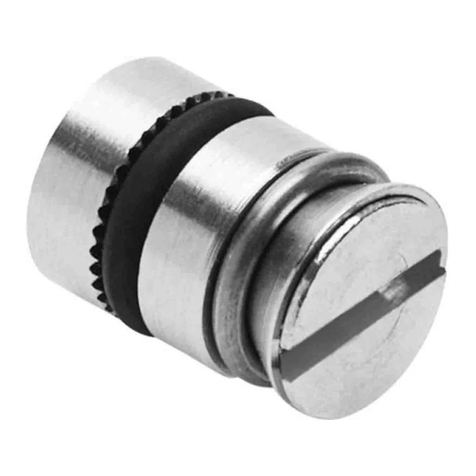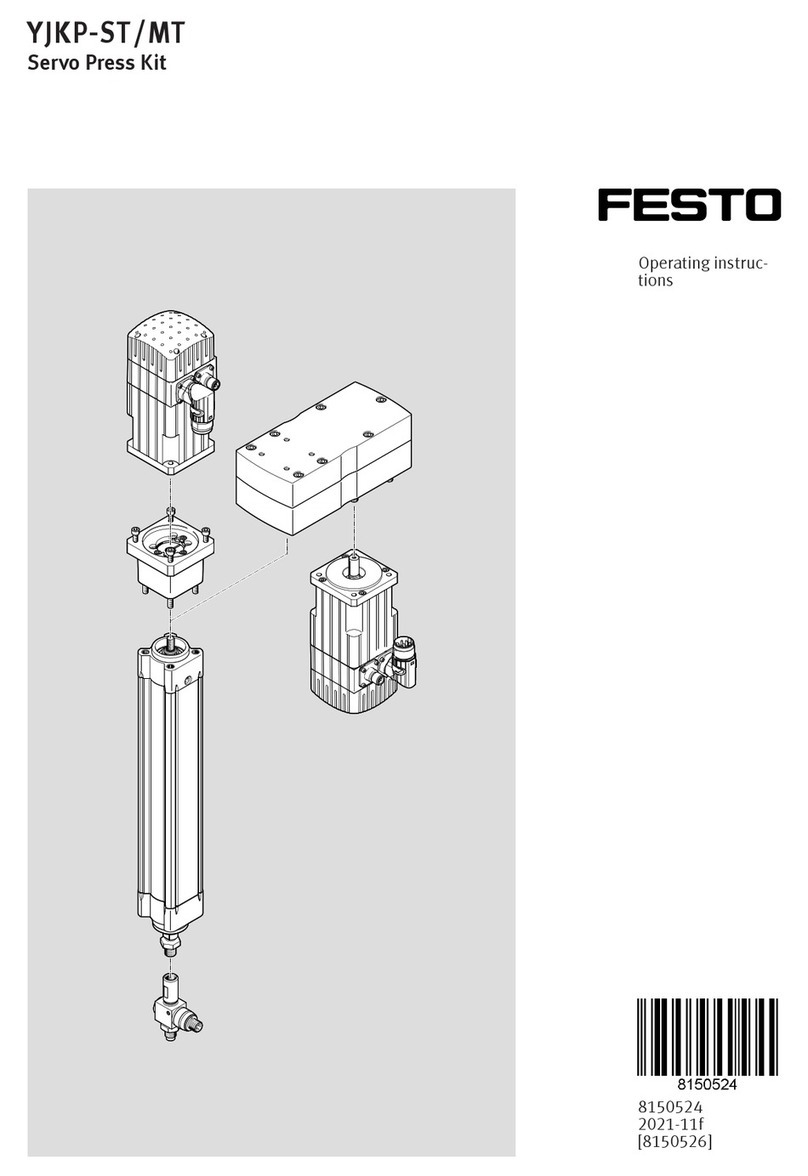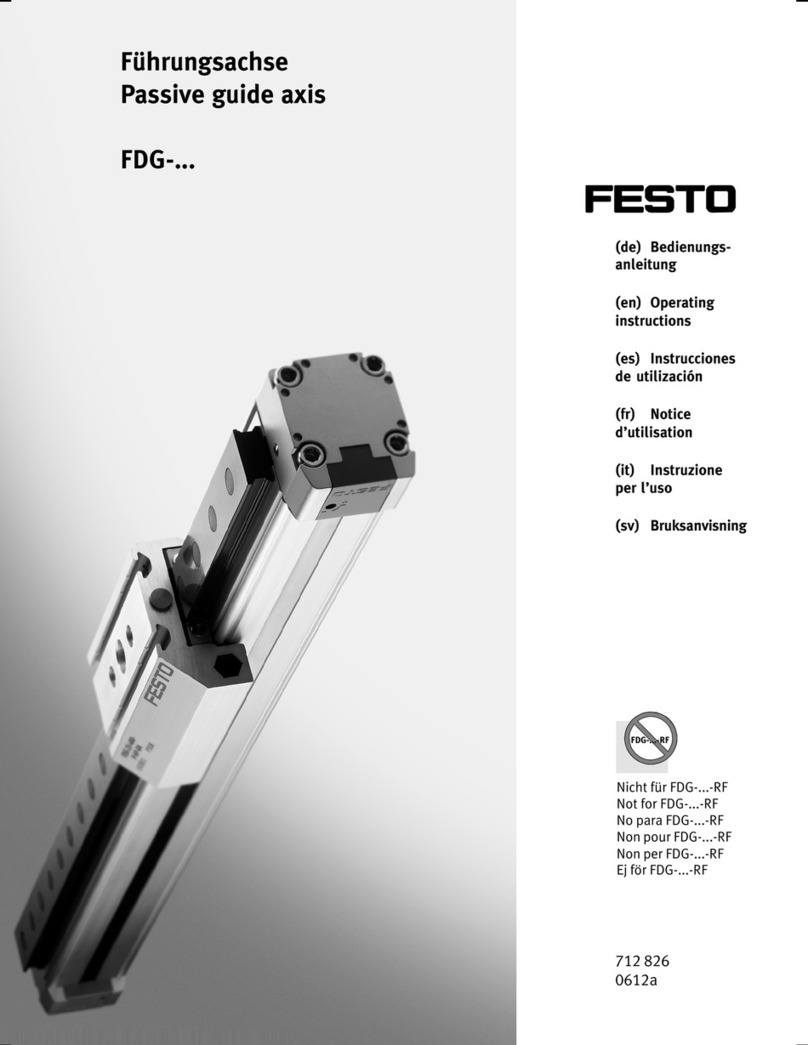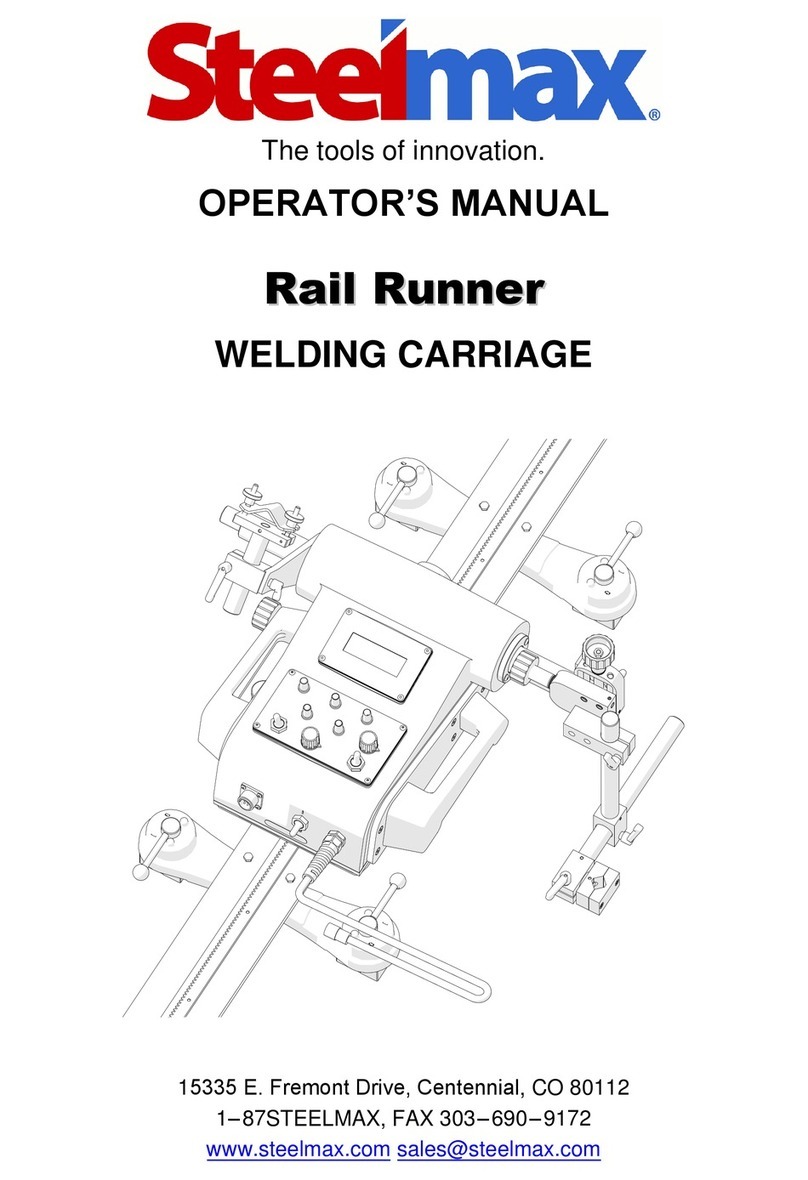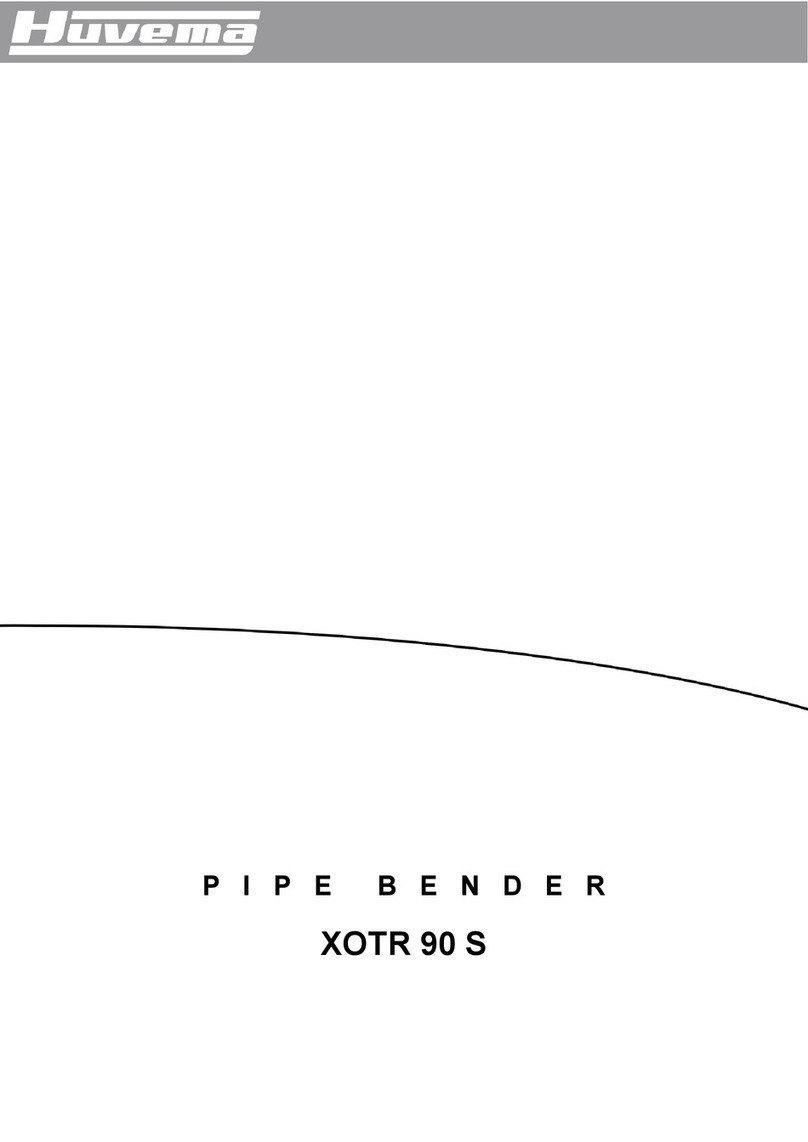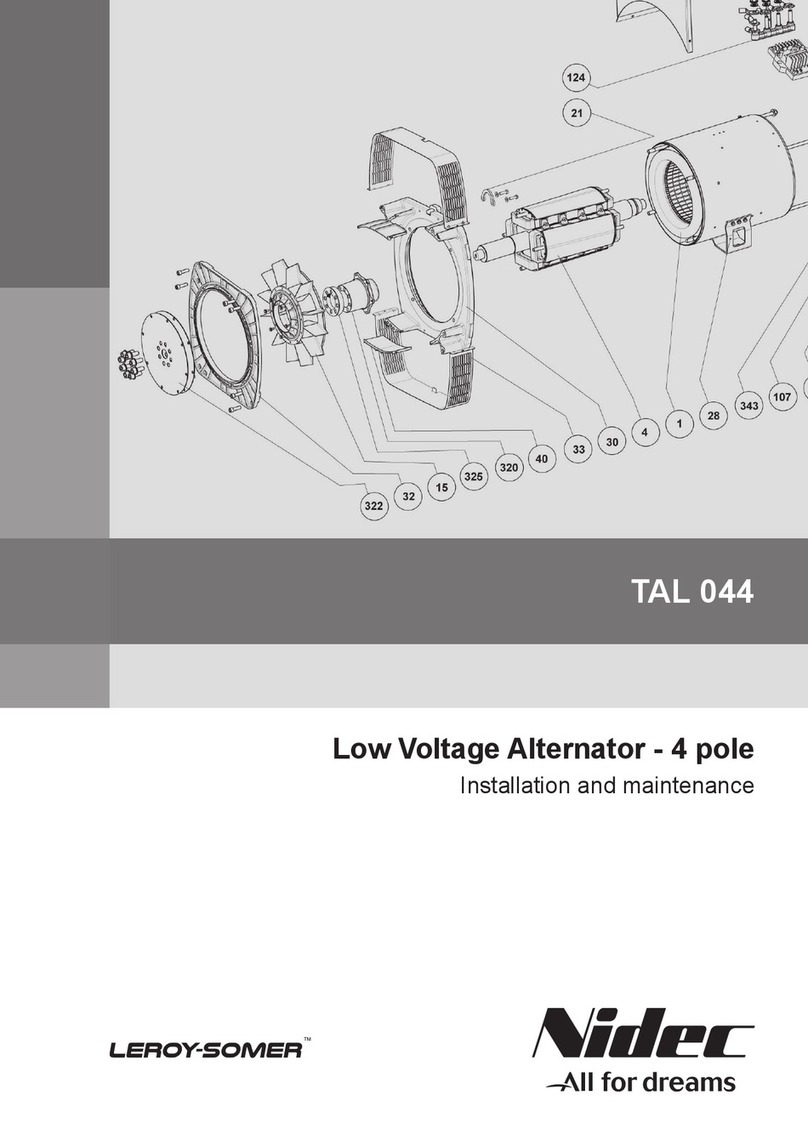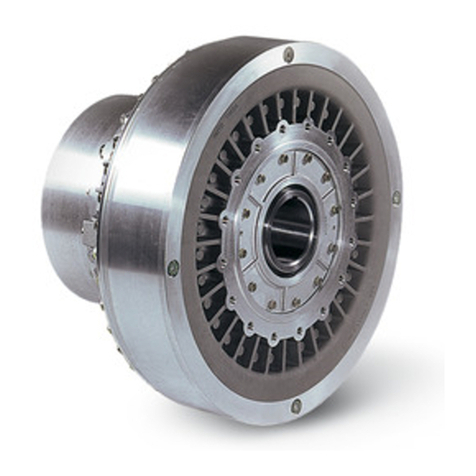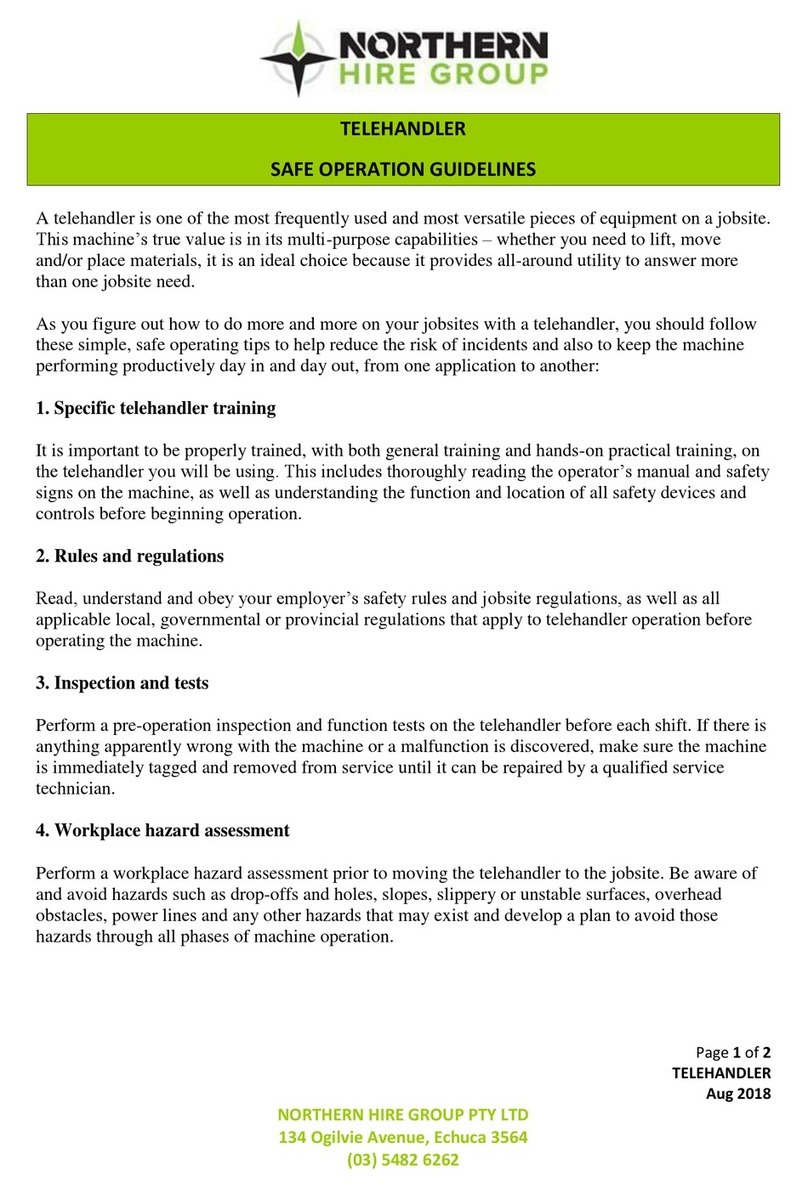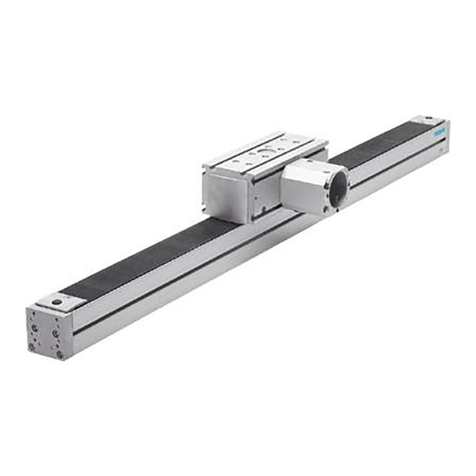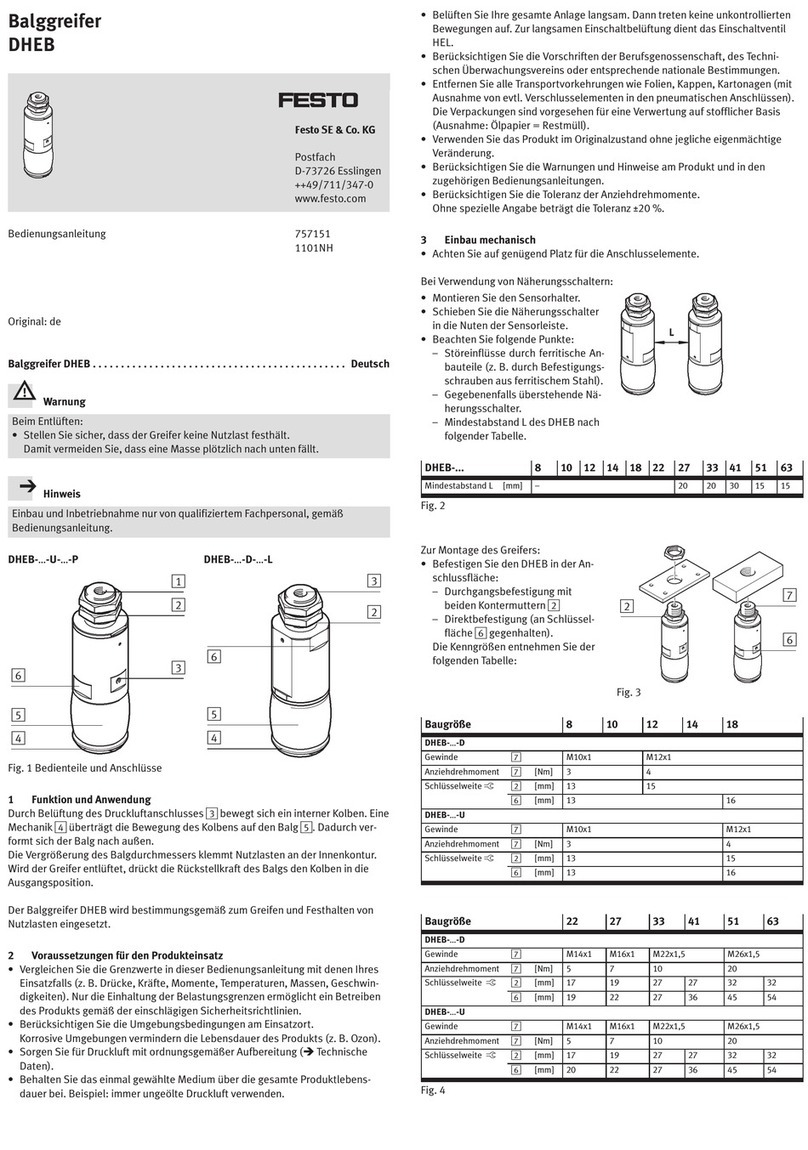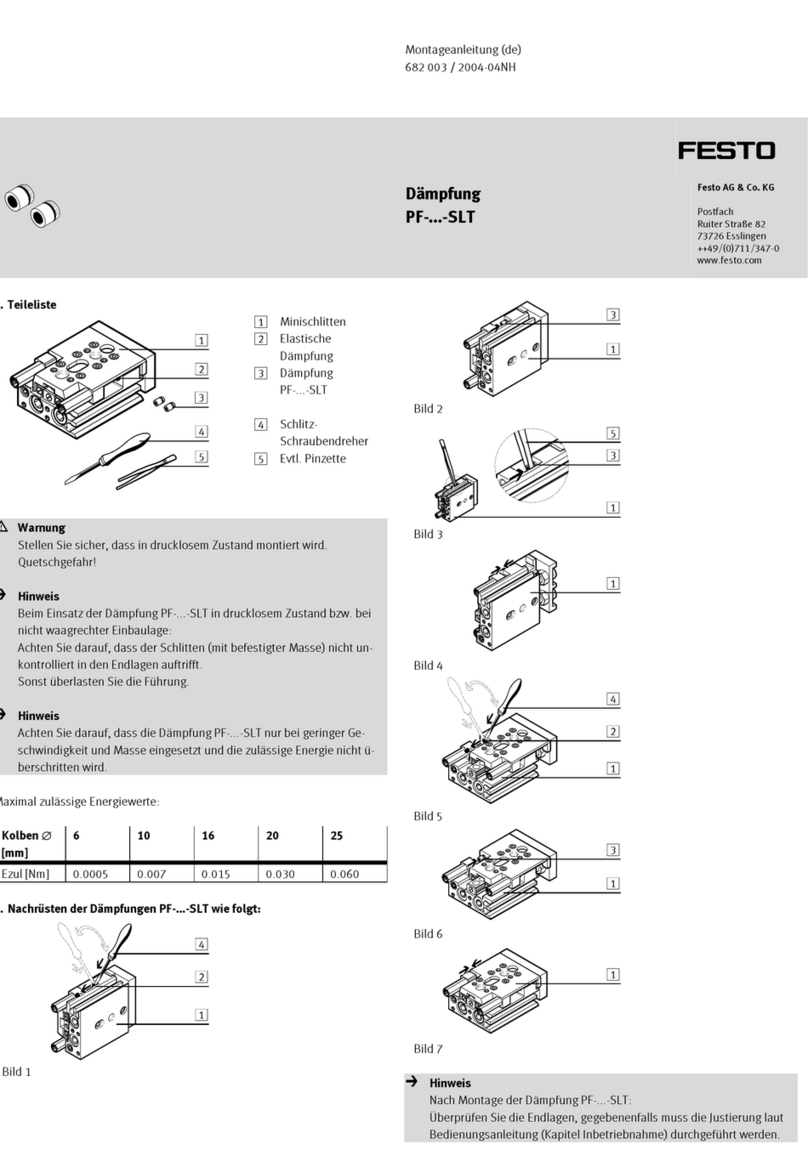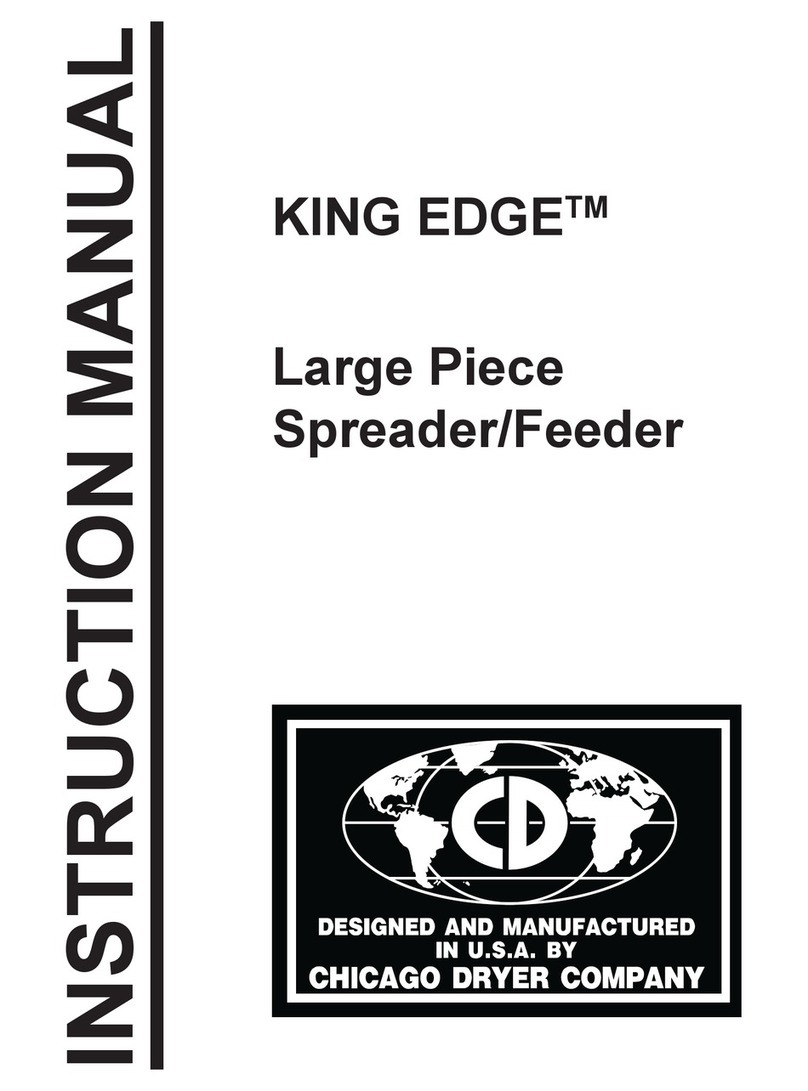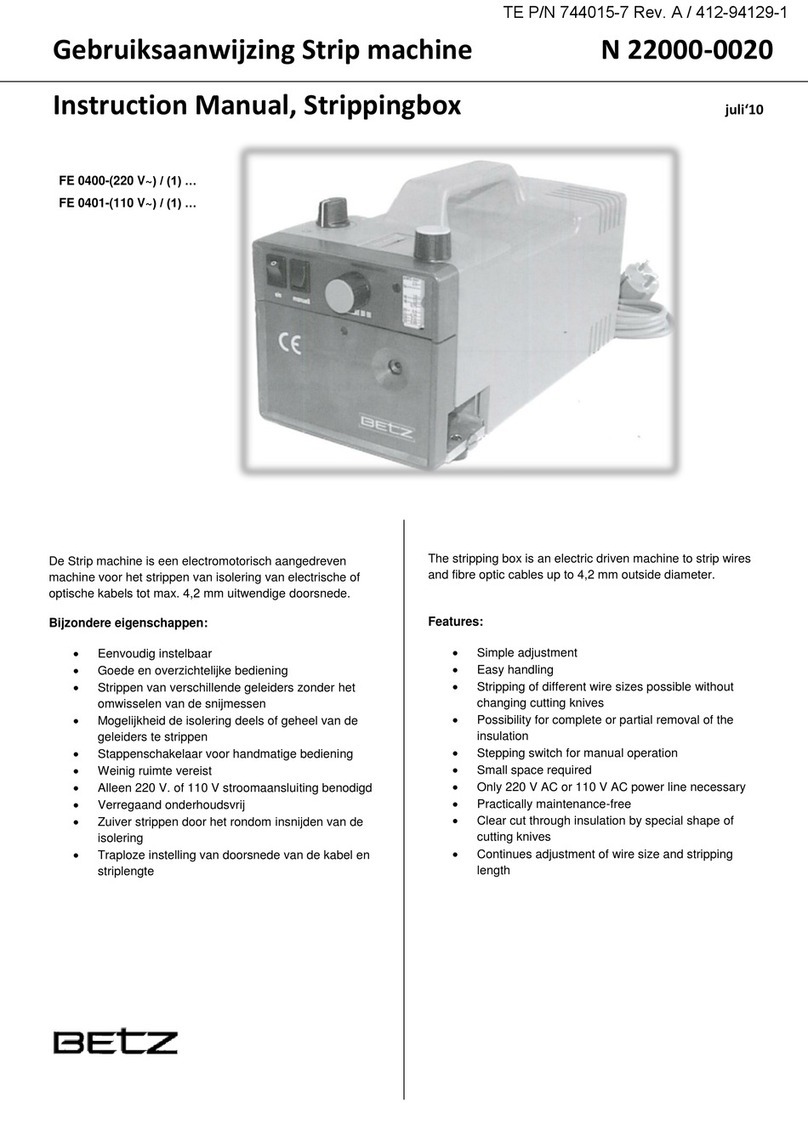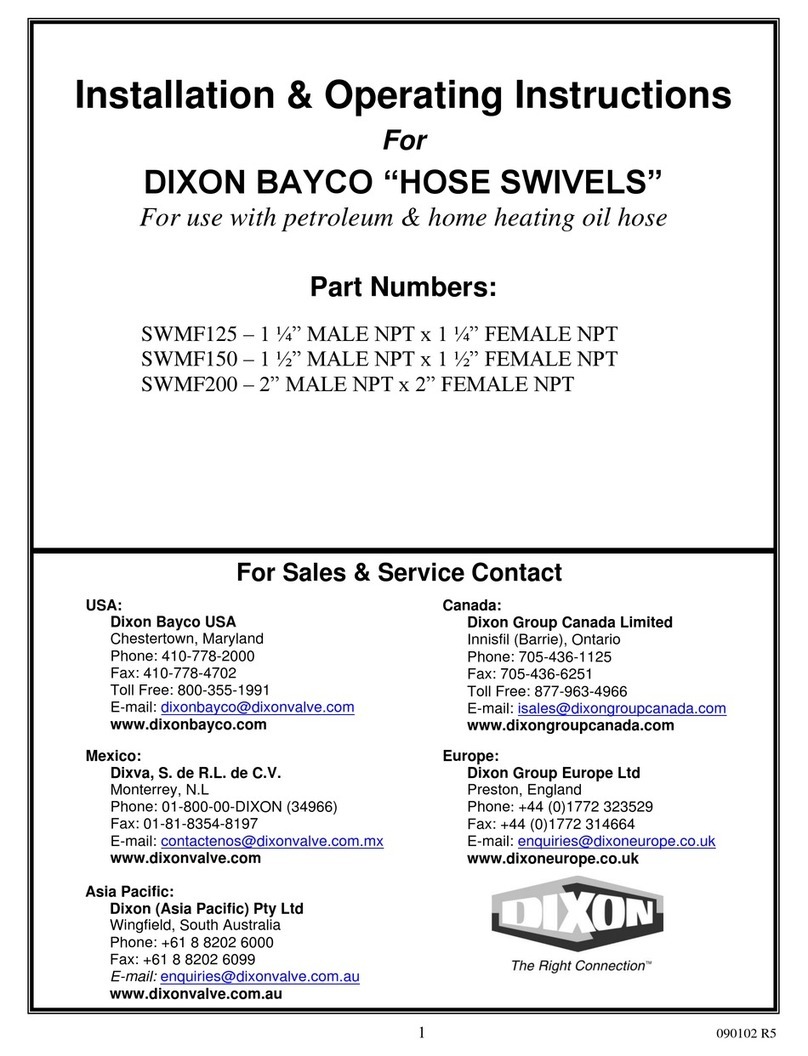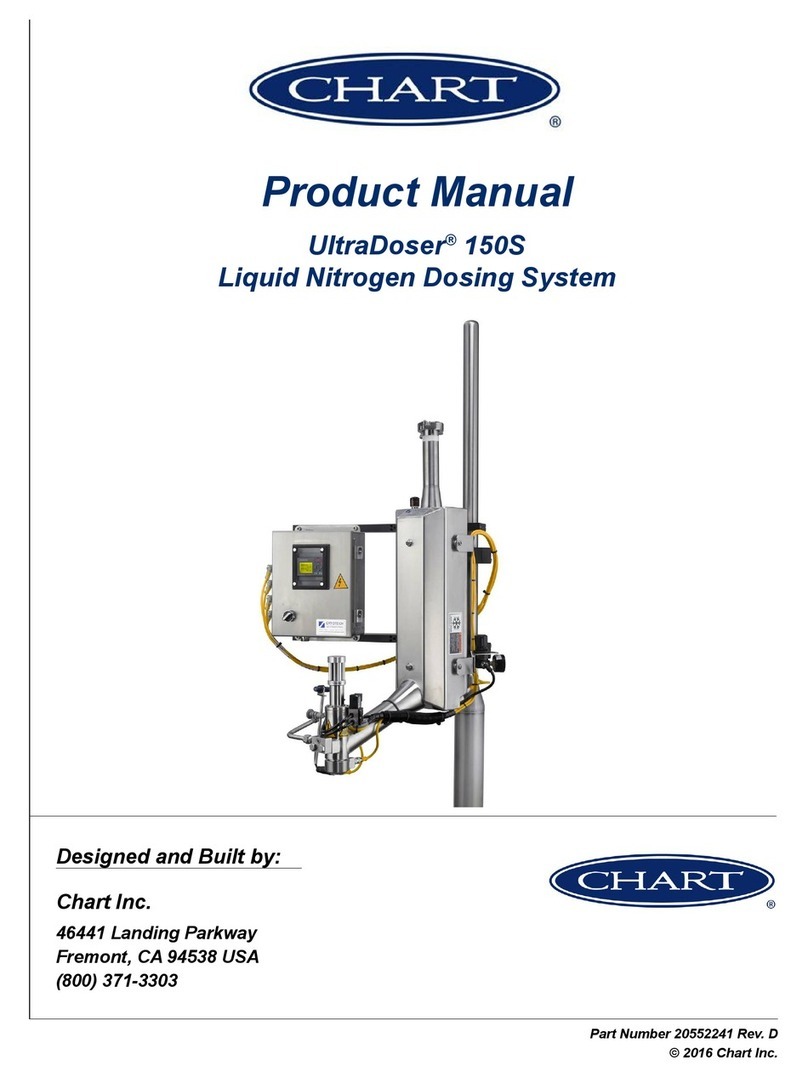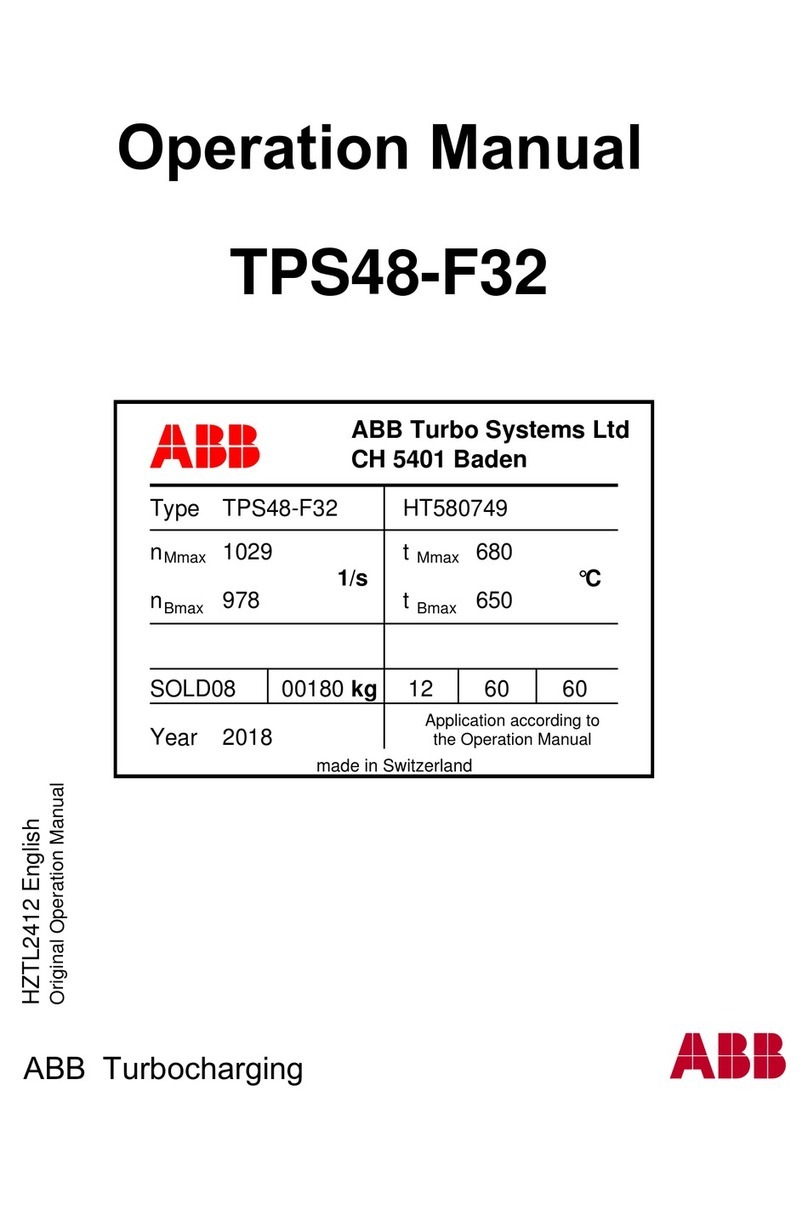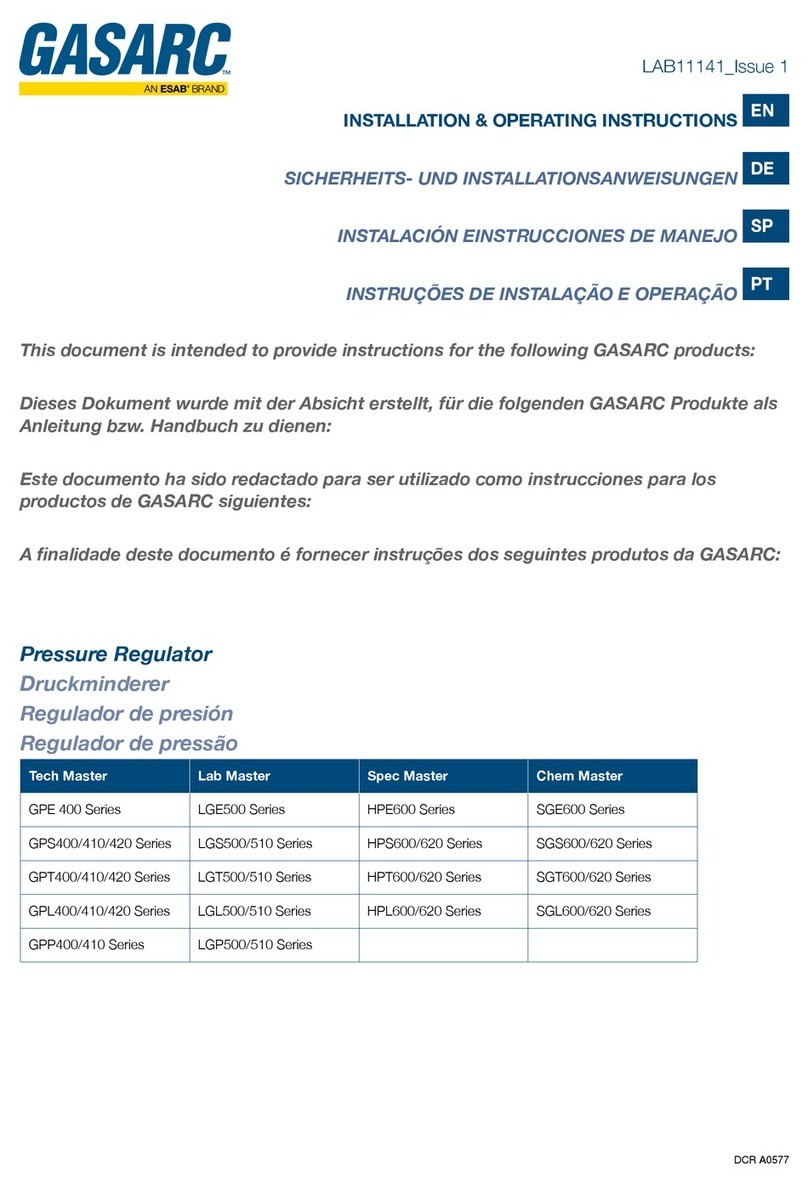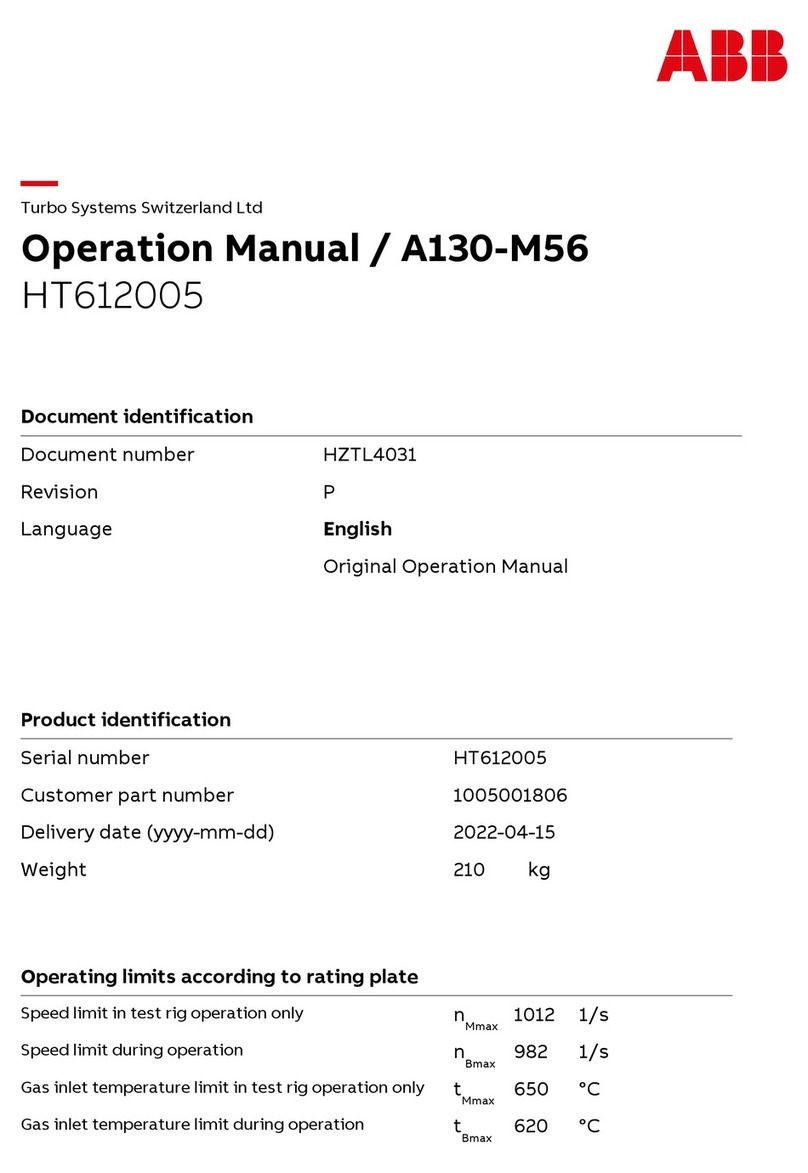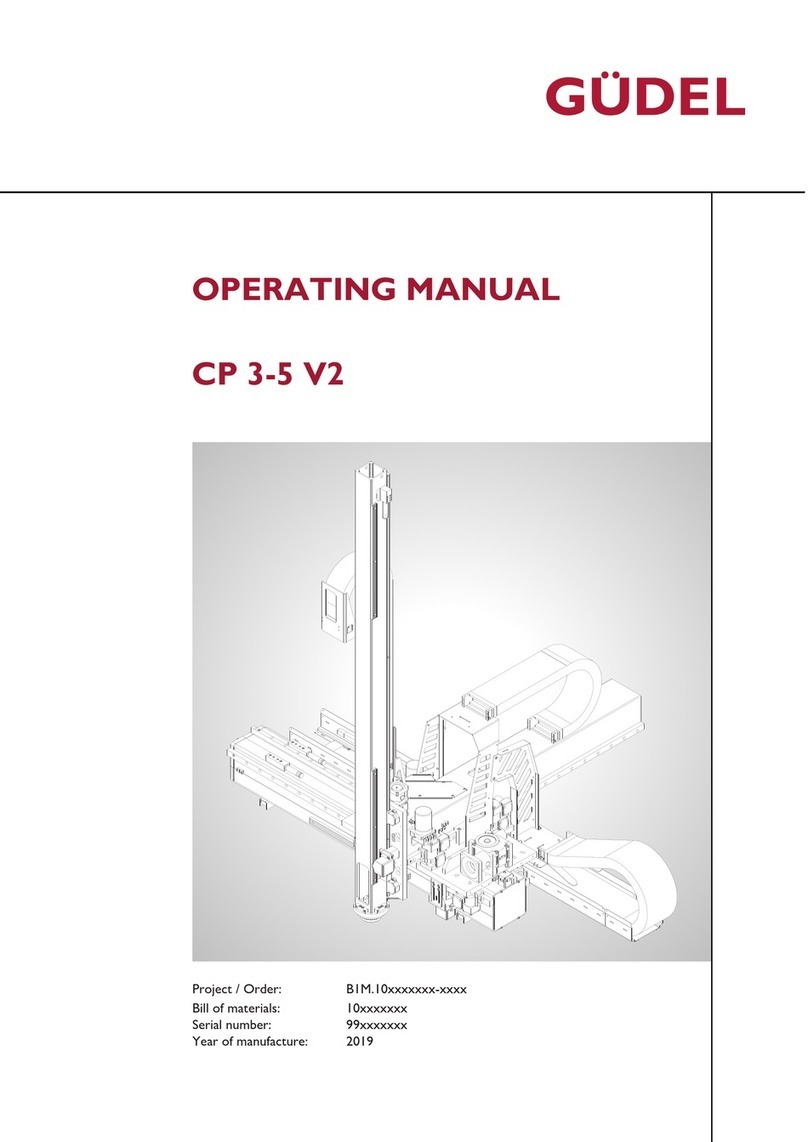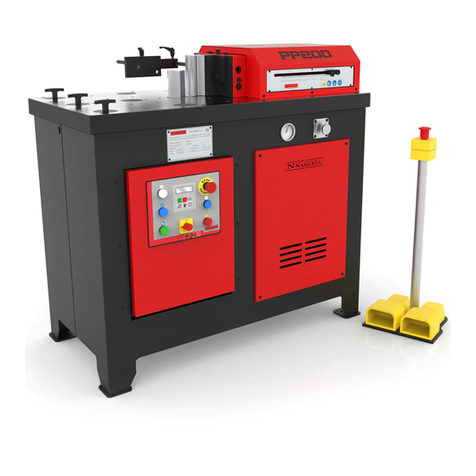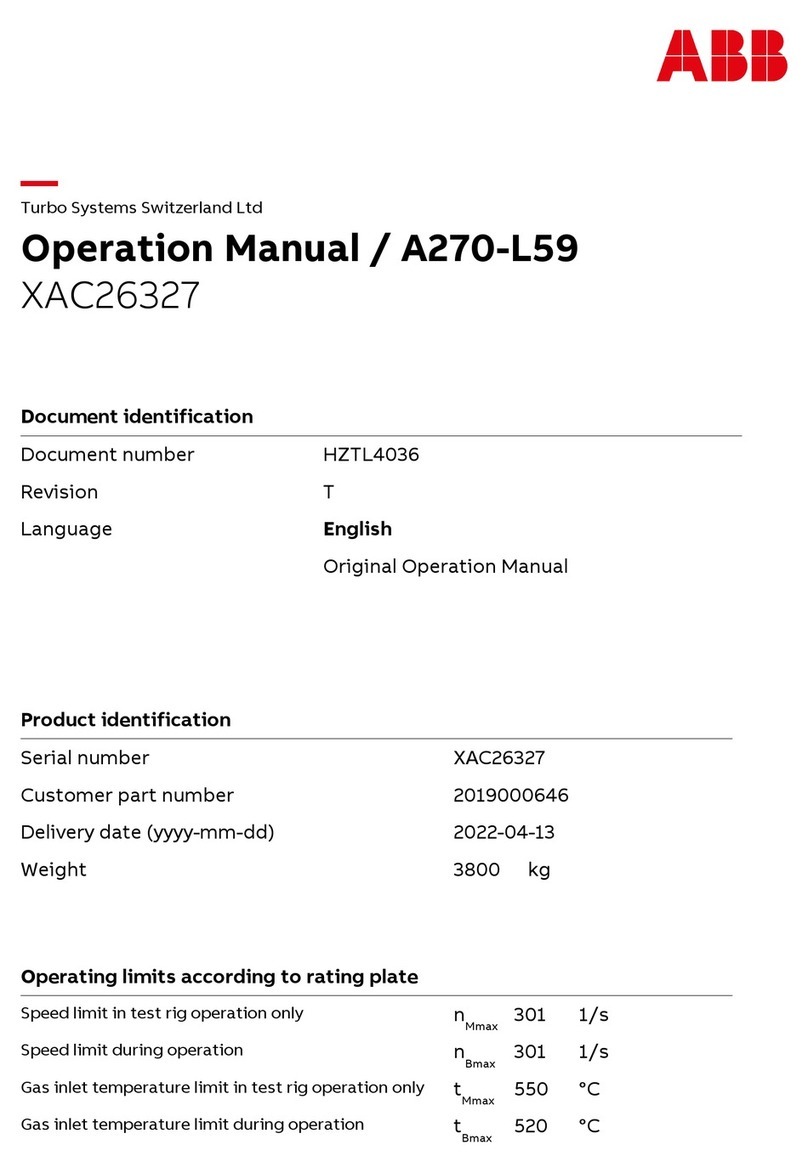5.2 Features
Features Code Specification
Vacuum suction nozzle OVEM Vacuum suction nozzle with vacuum solenoid valve
ON/OFF and manual override
Nominal width of laval
nozzle
-05 0.45 mm
-07 0.7 mm
-10 0.95 mm
-14 1.4 mm
-20 2.0 mm
Vacuum type -H High vacuum
-L High suction volume
Housing size/width -B 20 mm wide, ISO standard
-BN 20 mm wide, NPT
Pneumatic ports -QS All ports with QS fittings (-B-QS)
All ports with QS fittings in inch sizes (-BN-QS)
-QO Supply / vacuum port with QS fittings, exhaust port with
open pneumatic silencer (-B-QO)
Supply / vacuum port with QS fittings in inch sizes,
exhaust port with open pneumatic silencer (-BN-QO)
-GN All ports with female G thread (-B-GN)
All ports with female NPT thread (-BN-GN)
-GO Supply/vacuum port with female G threads, exhaust port
with open pneumatic silencer (-B-GO)
Supply/vacuum port with female NPT threads, exhaust
port with open pneumatic silencer (-BN-GO)
-PL Prepared for supply strip, vacuum port and exhaust port
with QS fittings (-B-PL)
Prepared for supply strip, vacuum port and exhaust port
with QS fittings in inch sizes (-BN-PL)
-PO Prepared for supply strip, vacuum port with QS fitting,
exhaust port with open pneumatic silencer (-B-PO)
Prepared for supply strip, vacuum port with QS fitting in
inch size, exhaust port with open pneumatic silencer
(-BN-PO)
Normal position of the
vacuum suction nozzle
-ON NO, normally open (vacuum generation)
-OE NO, normally open (vacuum generation) with ejector pulse
-CN NC, normally closed (no vacuum generation)
-CE NC, normally closed (no vacuum generation) with ejector
pulse
Electrical connection -N Plug M12 (5-pin)
Vacuum sensor –No vacuum sensor (PNP switching input)
-1P 1 switching output PNP
-1N 1 switching output NPN
Fig. 4 Overview of variants
6 Fast commissioning with factory setting
The vacuum suction nozzle is available with the following factory settings:
Switching characteristics of the electrical output: threshold value comparator
Switching element function of the electrical output: NO (normally open)
Switching point (SP): –0.4 bar
Fixed hysteresis (HYS): 20 mbar
1. Mount the vacuum suction nozzle (èChapter 8.1).
2. Connect the vacuum suction nozzle pneumatically (èChapter 8.2).
3. Connect the vacuum suction nozzle electrically (èChapter 8.3).
èThe vacuum suction nozzle can be placed in operation.
If you do not wish to use the factory settings, you can teach a switching point for
the switching output (èChapter 9.2).
The factory settings are not reproducible.
7 Function and application
The OVEM vacuum suction nozzle is intended for use to generate vacuum and is
only intended for use inside buildings.
The vacuum generated is used together with a suction gripper to create a force
that can grip a workpiece so that it can be transported. The vacuum suction nozzle
is available with a variety of pneumatic and electric switching functions.
The taught setpoint value for the generated vacuum is monitored via an integrated
vacuum sensor (-1P, -1N). If the setpoint value is reached or if it is not reached due
to malfunctions (e.g. leakage, dropped workpiece), the vacuum sensor emits an
electrical signal and the LED indicates whether or not the taught setpoint was
reached.
The supply of compressed air for vacuum generation is controlled by an integrated
solenoid valve. The solenoid valve can be supplied with two different switching
functions, NC and NO. The vacuum is generated as soon as compressed air is ap
plied to the vacuum suction nozzle and the voltage is switched on (NC: -CE, -CN) or
off (NO: -OE, -ON) as defined by the switching function of the solenoid valve 2.
The integrated solenoid valve 1can be used to control and generate an ejector
pulse to release the workpiece safely from the suction cup and to purge the vacu
um rapidly.
7.1 Switching output and switching inputs
The vacuum is monitored with the aid of a piezoresistive sensor element. The vacu
um sensor converts pneumatic pressure values and supplies electrical signals.
When the taught switching point is reached, the vacuum sensor closes a circuit,
supplying an electrical signal. This signal can be used for control functions.
The vacuum suction nozzle can be connected to higher-level systems by means of
a switching output (-1P, -1N) and switching inputs. The switching output is con
figured as normally open. The output’s switching function is defined as a threshold
value comparator.
The input signals determine the actuation of the solenoid valves for control of the
compressed air and the ejector pulse.
ON
ON
ON
ON
ON
ON
OFF
OFF
OFF
OFF
OFF
OFF
Solenoid valve 1Solenoid valve 2
Input signal
Switching
position
Solenoid valve
Fig. 5 Switching characteristics of switching inputs
Code Switching output Switching inputs
-1P Switching output
Positive switching
Switching inputs
Positive switching
-1N Switching output
Negative switching
Switching inputs
Negative switching
Fig. 6 Variants, switching output and switching inputs







